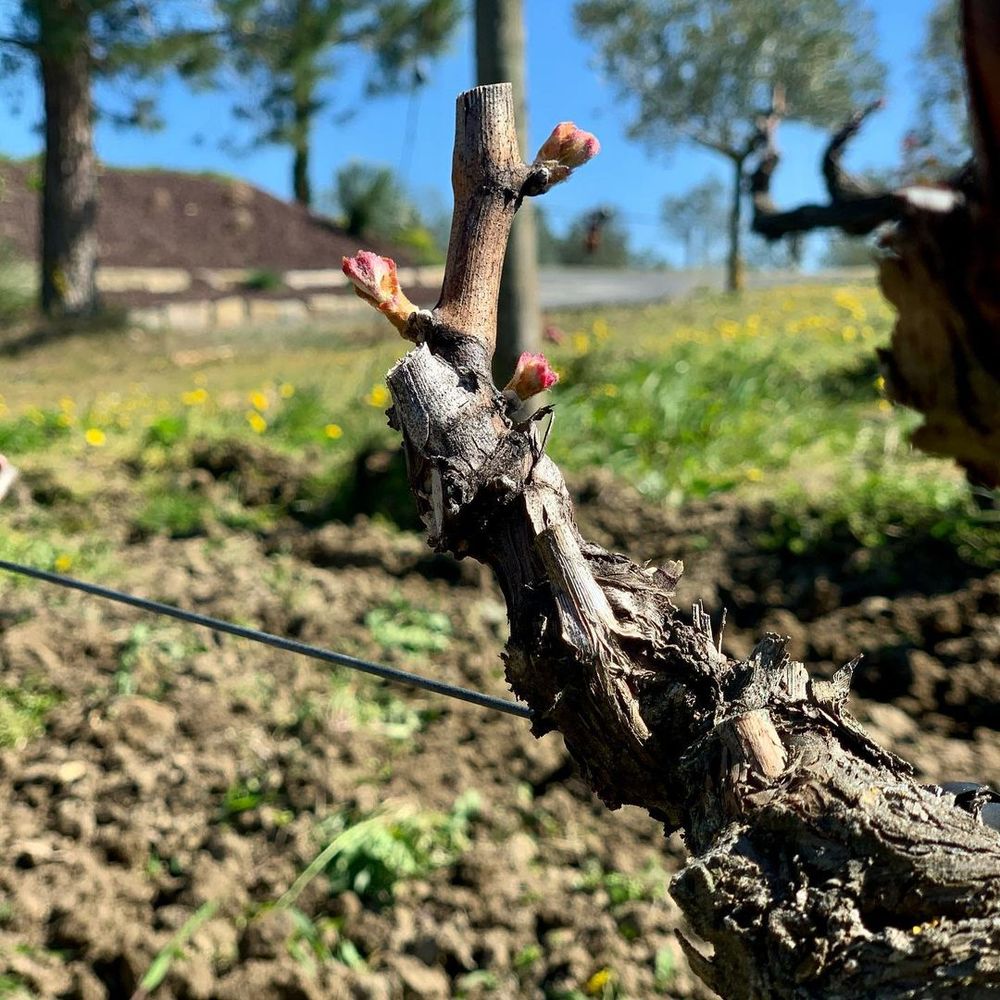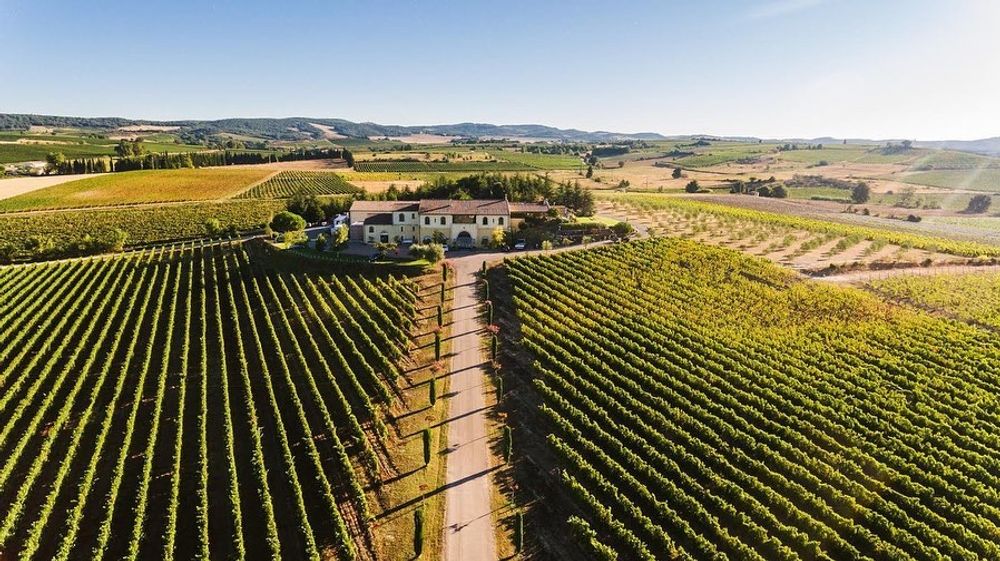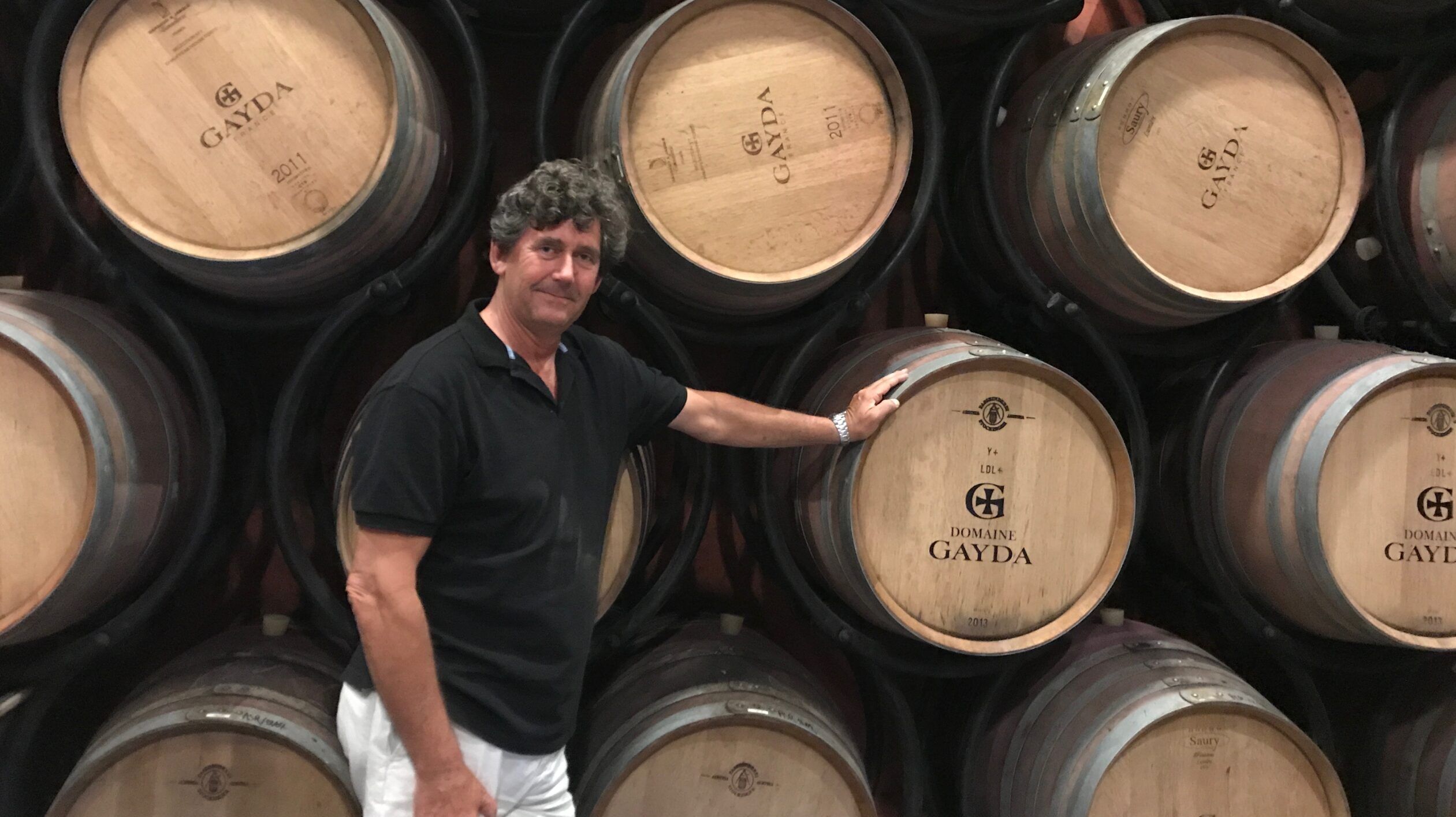“For the next six months I will have to look out of my office window at a vineyard we will have to maintain and nurture for the next six months knowing there are no grapes at the end of it!”
So running a vineyard and wine business over the last couple of weeks has been on a new level of stress. Waking up at 04.00 hrs and watching your weather app and wondering where the temperature will bottom out.
Last week when we got hit the worst it started was at minus 2°C at 04.00 and that is a temperature where trouble starts. Then by 05.00 hrs it hit minus 4°C and then I knew we were in trouble… our weather station is about 3 metres above the lowest level in the farm so I knew we were going to have temperatures of minus 6°C in the low lying areas.

Cruel irony. Instagram post March 26: “Budding has begun on our Chenin Blanc vines, showing the unique colours of this grape variety. This important start of the growing cycle means that Vincent and Tim are now alert to the spring frosts”
Now frosts in April are not uncommon, where the difference lies now is the Climate Change raising winter temperature and in particular, March temperature. We had regular days over 20°C this March, great for sap flow and bud break. So our wonderful ‘fools paradise’ we were living at the end of March (when we so proudly posted on Instagram nice bright new shoots of hope for the vintage 2021) came crashing down around us.
We probably lost 60 to 70 % of our grapes at the home farm at Gayda, so 2021 vintages of Cabernet Franc and Chenin Blanc will be very small, hopefully big enough to keep some of our important customers with some product but certainly not enough to avoid a financial loss.
However, our strategy has always been “risk mitigation” and this year it saved us. Our vineyards in the Roussillon (Col de La Donna and Latour de France) and those in La Livinière were not touched. This limited our losses enormously and thank God our Chemin de Moscou vineyards were untouched.

Domaine Gayda has expanded its production away from its own estate which will be crucial as it copes with the frost damage for the 2021 vintageSo what now?
So this episode brought back our discussion about where to expand? The Roussillon with its friable schist soils with limited water-holding capacity means yields continue to drop as Climate Change reduces rainfall in summer and temperature rises cause plant stress, shutting off growth. Here, near Limoux, we get better yields as rainfall is more reliable and soil has a better water-holding capacity. But, as you get away from the maritime climates, we are going to see more late frosts! Everyone is looking to altitude for cooler nights, fresher wine, lower alcohol, meeting market demands… but how do we do that if we will continue to be hit by frosts and warm winters away from the coast?
Pruning later helps, coupled with different pruning methods and even developing new cultivars that ‘break’ later after the frosts. Investing in windmills to move the cold air, lighting fires and field stoves, irrigation? Of all these methods protecting the buds with irrigation causing an ‘igloo’ effect seems to be the best… but you need a dam or a river as the volume of water you have to use is massive.
These are not viable options for everyone as we don’t all make wine that retails at 50 quid a bottle.
So we will debate our way forward and I will let you know when I have got over the shock not helped by the fact that for the next six months I will have to look out of my office window at a vineyard we will have to maintain and nurture for the next six months knowing there are no grapes at the end of it.
Domaine Gayda is a Supplier Partner of The Buyer. To find out more about them click here.
































